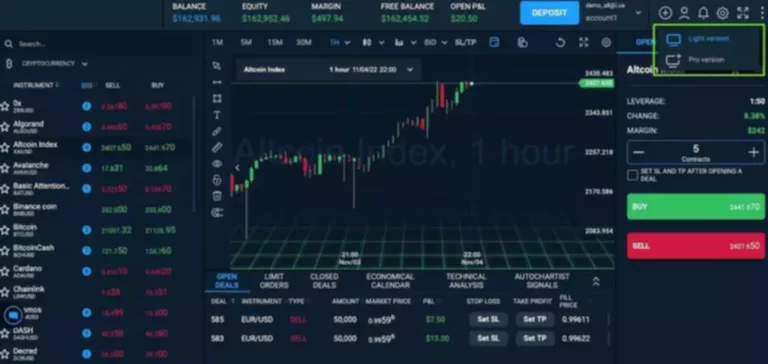The merge itself won’t resolve high gas prices, however—it just sets the stage for a set of upgrades that will eventually cut costs. These upgrades used to be known as Ethereum 2.0, but that terminology was scrapped in early 2022. High costs and slow transaction times are currently two of the main issues users have with the Ethereum network. Proof of stake is a type of consensus mechanism that differs from the traditional proof-of-work one. If an attacker wants to revert a finalized block, they would therefore have to be willing to lose at least one-third of all the ETH that’s been staked.
Find more answers to your questions about the upcoming merge and how it will affect current proof-of-work users. The Merge between ETH1 and the Beacon Chain is slated to occur in September 2022 after years of updates, improvement, tests, and phases. The migration introduces proof of stake to replace proof of work. According to some analysts, miners’ fees will be turned into a “digital ash” that no one can use. The option for miners is to contribute their GPUs to some Web3 protocols such as Akash, Render Network, or Livepeer.
A Delegated Proof of Stake-Byzantine Algorand-Directed Acyclic Graph consensus algorithm, namely PBDAG consensus algorithm, is designed for public chains. Finally, a personalized recommendation model based on the hybrid blockchain PBDAG consensus algorithm combined with an optimized back propagation algorithm is constructed. Therefore, the constructed model not only ensures low delay performance but also has high network security performance, enabling more efficient and accurate interaction of information. This solution provides an experimental basis for the information security and development trend of different types of data PRSs in various fields.
In December 2020, Ethereum launched the “beacon chain,” a proof-of-stake chain that ran in parallel with the main Ethereum blockchain. The beacon chain was neutered; while users could stake ETH on it, the main functions of Ethereum weren’t enabled. The merge is one of a set of upgrades that should also make Ethereum faster and cheaper to use.

Validators will replace miners and will be required to lock 32 ETH on the Ethereum network to qualify. As for the impact on ETH price, the community is optimistic that a reduction in issuance of new ETH will affect prices as demand will exceed supply. Ethereum proof of stake will not require mining; as such, it will not affect ETH price. However, the supply of new ETH tokens will reduce so much that demand might exceed supply, thereby pushing prices up. The Merge is the latest upgrade of the Ethereum network to a PoS consensus mechanism.
Then vote on this point as a group before adding them to the main chain. So, a blockchain is a digital ledger of distributed, decentralized, and often public transactions. Each transaction on a blockchain is recorded as a ‘block’ of data and must be verified by peer-to-peer computer networks before being added to the chain. This system ethereum proof of stake model helps secure the blockchain against fraudulent activity and double-spending. Thousands of existing smart contracts operate on the Ethereum chain, with billions of dollars in assets at stake. Proof of stake, first proposed on an online forum called BitcoinTalk on July 11, 2011, has been one of the more popular alternatives.

Data availability remains the fundamental scaling bottleneck facing the Ethereum ecosystem today, as layer-2 activity heats up and new types of applications appear onchain. In Ethereum’s case, its complex development roadmap introduces the possibility of errors to being made. This means its technical risks are even higher compared to a simpler and more straightforward crypto like Bitcoin. As is the case with any unproven asset or new technology, there is a ton of uncertainty around the ultimate outcome. While impossible to predict, investors can’t ignore macroeconomic factors. They can both positively and negatively influence Ethereum’s price action.
Proof-of-stake is designed to reduce network congestion and address environmental sustainability concerns surrounding the proof-of-work (PoW) protocol. Proof-of-work is a competitive approach to verifying transactions, which naturally encourages people to look for ways to gain an advantage, especially since monetary value is involved. To activate your own validator, you’ll need to stake 32 ETH; however, you don’t need to stake that much ETH to participate in validation. You can join validation pools using “liquid staking” which uses an ERC-20 token that represents your ETH. This allows Blobstream to update commitments onchain faster than once every ~100 minutes, and allows for on-demand updates.
They receive minor attestation penalties every day because they are present on the network but not submitting votes. This all means a coordinated attack would be very costly for the attacker. Thanks to the added functionality and programmability of smart contracts, Ethereum is trying to become the world’s decentralized computing platform.
Under the PoW mechanism, miners compete to solve complex mathematical problems. Whichever miner solves the problem first is allowed to add a block of transactions that earns them rewards. The consequence of this process is that mining devices worldwide compute the same problem, which uses a substantial amount of energy since mining requires lots of electricity. A blockchain protocol provides traders with incentives to validate transactions by rewarding them with cryptocurrency for every correct validation. As a safeguard against fraud, proof-of-stake protocols require traders to “stake” some of their cryptocurrency as collateral, which is then locked up in a deposit. If a trader adds a transaction to the blockchain that other validators deem to be invalid, they can lose a portion of what they staked.
- Many expect that a significant number of cryptocurrencies will migrate to proof of stake.
- The Blobstream smart contract enforces that every commitment has ECDSA signatures from validators representing at least 2/3s of the stake on Celestia.
- For example, the honest validators could decide to keep building on the minority chain and ignore the attacker’s fork while encouraging apps, exchanges, and pools to do the same.
- Malicious nodes can participate in the permissioned blockchain and hold some tokens.
A few of the cryptocurrencies already using the proof of stake consensus mechanism include Cardano (ADA), Solana (SOL), Tron (TRX), EOS, Cosmos (ATOM), Tezos (XTC), and Terra. [clarification needed]and that most proof of stake https://www.xcritical.in/ systems cause less energy consumption in most configurations[specify]. The researchers also noted that the energy consumption for proof-of-stake with permissioned systems that used less validators (than Proof Of Work)?
They are actually Sybil resistance mechanisms and block author selectors; they are a way to decide who is the author of the latest block. Blockchain is a technology that enables secure sharing of information. A blockchain is a type of distributed database or ledger—one of today’s top tech trends—which means the power to update it is distributed between the nodes of a public or private computer network.
Proof-of-stake is a way to prove that validators have put something of value into the network that can be destroyed if they act dishonestly. In Ethereum’s proof-of-stake, validators explicitly stake capital in the form of ETH into a smart contract on Ethereum. The validator is then responsible for checking that new blocks propagated over the network are valid and occasionally creating and propagating new blocks themselves. If they try to defraud the network (for example by proposing multiple blocks when they ought to send one or sending conflicting attestations), some or all of their staked ETH can be destroyed. Originally discussed in the Ethereum research community as early as 2017, DAS allows any user to directly contribute to data availability for rollups using Celestia by running a sampling light node. Light nodes can detect if up to two-thirds of Celestia validators withhold data or produce invalid blocks, and hold them accountable via slashing.